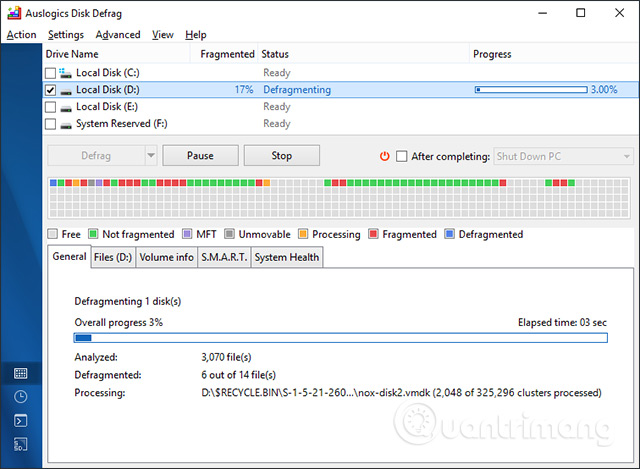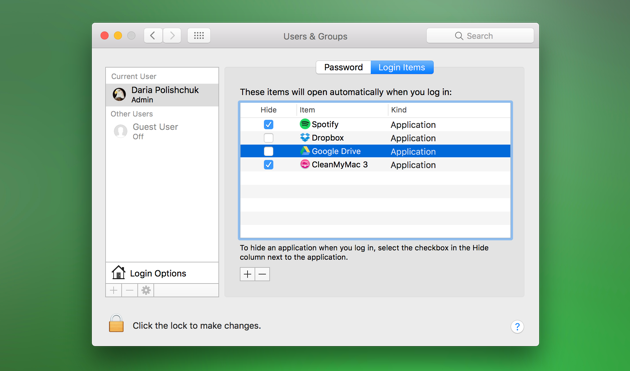
Free Download Auslogics Disk Defrag 9 Professional full version standalone offline installer for Windows, Get your drives optimized for top speed and maximum efficiency with this powerful program’s smart algorithms and boot-time defrag technology.Further as best alternative program you can also FREE download DiskTrix UltimateDefrag. Second, Mac OS X 10.2 has a routine that clumps smaller portions of disk space into larger portions on the fly. Finally, Mac OS X 10.3.x can automatically defragment some files through a process.
Fragmentation is a common phenomenon that occurs on the hard drives over the course of time and its usage. The files are written to the storage in chunks of memory and upon repeated write and read operations they leave memory chunks that cannot be used as contiguous storage locations. The most difficult to remove fragmentation type is internal fragmentation which occurs due to the rules according to which the space on the storage is allocated to the data. The memory chunks can be provided in the multiples of 4, 8 and 16. Now, if a file requires 23 bytes of storage, it has to be allocated 32 bytes. This leads to wastage of space. They remain useless in the form of isolated memory space. This slows the system gradually. It may also lead to system crash or boot time problems. Defragmentation is the method to lower the fragments and make the unused space available as contiguous storage. Defragging a hard drive populates the related files together as much as possible and speeds up the system performance.
Note: Solid State Drives (SSDs) should not be defragged. Attempting to defrag an SSD may result in serious damage to the drive.

There is a difference in how defragmentation works on Windows OS and Mac OS X. Let us look at the difference in the working on both the operating systems.
Windows 10
On Microsoft Windows 10 operating system, defragmentation can be done using an in-built utility called “Optimize”. In addition, defragmentation process is generally scheduled on the Windows system which usually runs at late night or weekly. It automatically does the defragmentation. Periodically, it scans the system for memory fragments and does the reallocation of the files to make optimum use of the storage space. However, a manual defragmentation may be required when the system is extremely slow and
OS X Yosemite
On the Mac systems, there is no built-in defrag utility available. The system does the defragmentation internally using the process called Hot File Adaptive Clustering (HFAC). Hot File Adaptive Clustering identifies the read-only files and those which are accessed frequently. Then, it allocates them to the space called “hot zone” on the storage which has fast access. This way the system maintains the performance and operating speed. A Mac generally does not require a defragmentation but may become necessary in case the system runs slow due to working with large files such multimedia files, video editing tools and more that requires read and write operations of large files frequently.
Systems with Solid Stare Drives
Newer systems are coming up with SSDs installed that does not need defragmentation. These drives use a TRIM utility to defrag the drive automatically. SSDs come with pre-allocated space for storage management. OS determines the files that are unused or redundant and TRIM informs the SSD which cleans them up.

Disk Defragmentation on Windows 10
Disk defragmentation tool shipped with Windows 10 can analyze the disk for fragmentation. It also suggests whether a defragmentation is required at all. Here are the steps to follow to defragment a drive on Windows 10:
- Go to the drive on which the operating system is installed.
- Select properties under Drive Tools tab on the top.
- Select the Tool tab on the dialogue box that appears.
- Under Error-Checking, click Check to verify there are not errors on the disk.
- If no errors found, select Analyze Optimize under Optimize and Defragment Drive.
- In Optimize Drive box, click Analyze. System will start analyzing the selected Drive for fragments. If the drive does not require any fragmentation the system will say so. It will also display the percentage of fragmentation affecting the system.
- Once fragmentation is determined, click Optimize to start the defragmentation process.
The process may take quite some time depending on the degree of fragmentation. The system should not be used while defragmentation process runs for efficient working of the process. Defragmentation cannot be done on a Network drive, a drive formatted in a filesystem other than NTFS, a drive with errors and Solid State Drive.
Defragmentation on OS X Yosemite
As explained earlier in this article, a Mac systems has an HFAC built-in process to clean the fragments, it requires a defragmentation at very less intervals. In case the Mac system is used for data heavy applications or programs involving very high data to work with, the system may become slow and requires a defragmentation. With the lack of any in-built utility to defrag as available with Windows systems, a third party tool Stellar Drive Defrag is efficient software to perform defragmentation on a Mac system. This software is very well compatible with OS X Yosemite.
Mac Drive Defrag

Mac Drive Defrag utility is a perfect option to speed up the slow Mac system. It defrags the OS X system drives and boot volume as well. Salient features of this software are listed below:
Auslogics Disk Defrag Mac Os

Defrag Mac Software
- Mac File Defrag: This feature logically related files and attempts to relocate them in nearest contiguous locations to optimize the storage allocation and reduce defragmentation.
- Metadata Defragmentation: Metadata files such as catalog, allocation extent overflow and more are defragged using this software to reduce overall fragmentation.
- Full Defragmentation: Full defragmentation functionality performs a comprehensive defragmentation of all files including metadata, catalogs and unused space.
- Quick Defragmentation: In quick defragmentation option user can select the files to defragment.
Disk Defragmenter Mac
Version 3.0 of the software allows the users to defragment the encrypted files using any of the above method once the drive is unlocked using the password.
